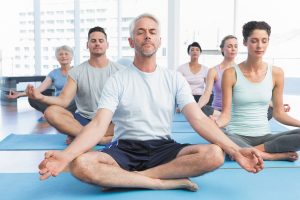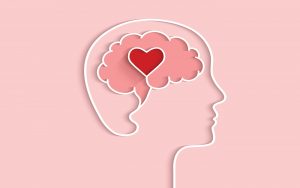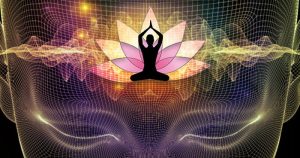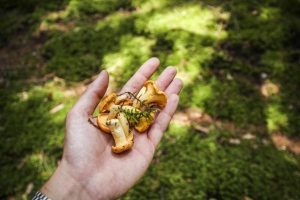Change the Brain for Greater Happiness with Meditation
By John M. de Castro, Ph.D.
“meditation. . . appears to have an amazing variety of neurological benefits – from changes in grey matter volume to reduced activity in the “me” centers of the brain to enhanced connectivity between brain regions.” – Alice Walton
There has accumulated a large amount of research demonstrating that meditation practice has significant benefits for psychological, physical, and spiritual wellbeing. It has been shown to improve emotions and their regulation. It also increases happiness levels in practitioners. One way that meditation practices may produce these benefits is by altering the brain. The nervous system is a dynamic entity, constantly changing and adapting to the environment. It will change size, activity, and connectivity in response to experience. These changes in the brain are called neuroplasticity. Over the last decade neuroscience has been studying the effects of contemplative practices on the brain and has identified neuroplastic changes in widespread areas. In other words, meditation practice appears to mold and change the brain, producing greater happiness.
In today’s Research News article “Rajyoga meditation induces grey matter volume changes in regions that process reward and happiness.” (See summary below or view the full text of the study at: https://www.ncbi.nlm.nih.gov/pmc/articles/PMC7528075/ ) Babu and colleagues recruited participants who practiced Rajyoga meditation and a group of non-meditators matched for age, gender, and handedness. Rajyoga meditation is an eyes-open focused meditation practice focusing on a point of light. They completed a measure of happiness and had their brains scanned with Magnetic Resonance Imaging (MRI).
They found that the Rajyoga meditators were significantly happier than the non-meditators and that the greater the number of hours of practice the greater the levels of happiness. The MRI scans revealed that the Rajyoga meditators had significantly great gray matter volume in the superior frontal gyrus, inferior orbitofrontal cortex, and precuneus. They also found that the greater the gray matter volume in the superior frontal gyrus, orbitofrontal cortex, insula, and anterior cingulate cortex the greater the levels of reported happiness.
The results of the present study need to be interpreted with caution as the groups were determined by whether they engaged in meditation or not. It is possible that people who choose to meditate are significantly different and have significantly different brains than those who do not. Nevertheless, the results suggest that Rajyoga meditators are happier and have greater amounts of brain matter in specific regions of the brain than non-meditators and that these changes are correlated with happiness. The brain areas with greater volume in the meditators are thought to process information regarding rewards and happiness. So, it is hypothesized that the meditation alters these brain regions that results in greater happiness.
So, change the brain for greater happiness with meditation.
“meditation physically impacts the extraordinarily complex organ between our ears. Recent scientific evidence confirms that meditation nurtures the parts of the brain that contribute to well-being. Furthermore, it seems that a regular practice deprives the stress and anxiety-related parts of the brain of their nourishment.“ – Mindworks
CMCS – Center for Mindfulness and Contemplative Studies
This and other Contemplative Studies posts are also available on Google+ https://plus.google.com/106784388191201299496/posts and on Twitter @MindfulResearch
Study Summary
Babu, M., Kadavigere, R., Koteshwara, P., Sathian, B., & Rai, K. S. (2020). Rajyoga meditation induces grey matter volume changes in regions that process reward and happiness. Scientific reports, 10(1), 16177. https://doi.org/10.1038/s41598-020-73221-x
Abstract
Studies provide evidence that practicing meditation enhances neural plasticity in reward processing areas of brain. No studies till date, provide evidence of such changes in Rajyoga meditation (RM) practitioners. The present study aimed to identify grey matter volume (GMV) changes in reward processing areas of brain and its association with happiness scores in RM practitioners compared to non-meditators. Structural MRI of selected participants matched for age, gender and handedness (n = 40/group) were analyzed using voxel-based morphometric method and Oxford Happiness Questionnaire (OHQ) scores were correlated. Significant increase in OHQ happiness scores were observed in RM practitioners compared to non-meditators. Whereas, a trend towards significance was observed in more experienced RM practitioners, on correlating OHQ scores with hours of meditation experience. Additionally, in RM practitioners, higher GMV were observed in reward processing centers—right superior frontal gyrus, left inferior orbitofrontal cortex (OFC) and bilateral precuneus. Multiple regression analysis showed significant association between OHQ scores of RM practitioners and reward processing regions right superior frontal gyrus, left middle OFC, right insula and left anterior cingulate cortex. Further, with increasing hours of RM practice, a significant positive association was observed in bilateral ventral pallidum. These findings indicate that RM practice enhances GMV in reward processing regions associated with happiness.
https://www.ncbi.nlm.nih.gov/pmc/articles/PMC7528075/









